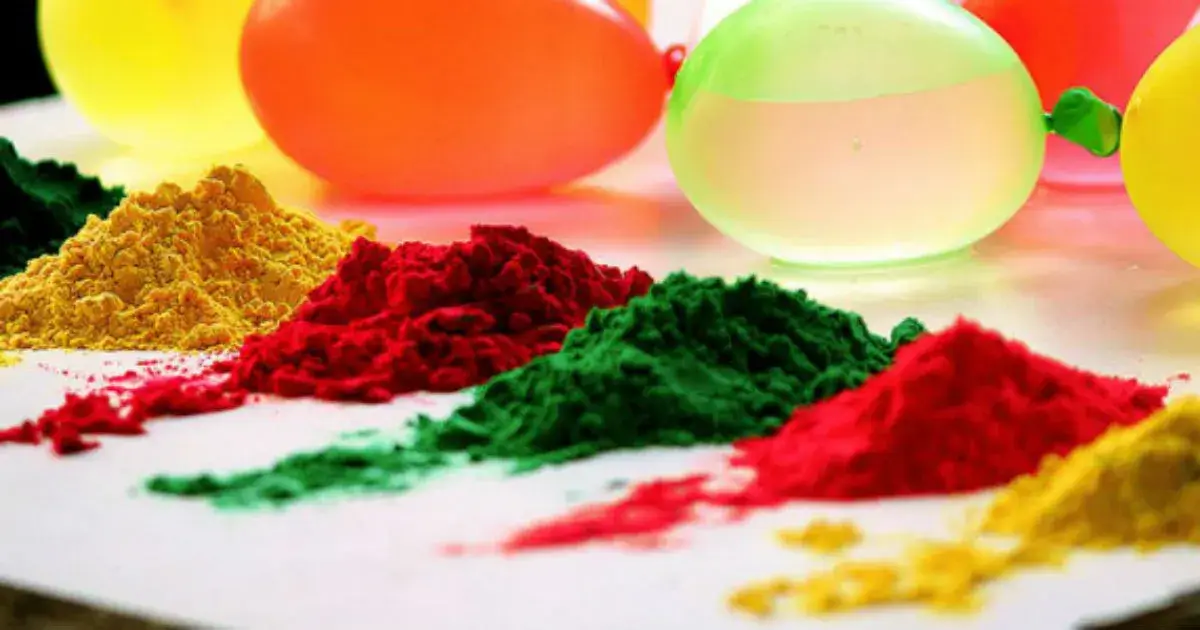Creating Natural Colors from Flowers: A Step-by-Step Guide and it’s Benefits

Ankit Sharma
Mar 04, 2023
Continue reading "Creating Natural Colors from Flowers: A Step-by-Step Guide and it’s Benefits"

Making natural colors from flowers is a fun and creative activity that you can try at home. Using flowers to create dyes and pigments for painting, tie-dyeing, or even coloring fabrics is an eco-friendly and sustainable alternative to synthetic dyes. Here is a step-by-step guide on how to make natural colors from flowers:
Materials you will need:
- Fresh or dried flowers (such as marigold, hibiscus, rose, and daisy)
- A large pot or saucepan
- Water
- White vinegar
- Strainer or cheesecloth
- Optional: alum powder (a natural mordant)
Instructions to make natural Colors from Flowers:
- Prepare your flowers: Choose the type of flower you want to use and gather enough to fill your pot halfway. You can use fresh or dried flowers. If using fresh flowers, remove the stems and leaves and chop them into small pieces. If using dried flowers, crush them into smaller pieces using a mortar and pestle.
- Boil the flowers: Fill your pot halfway with water and add the chopped or crushed flowers. Bring the water to a boil and let it simmer for about an hour. Stir occasionally to prevent the flowers from sticking to the bottom of the pot.
- Strain the mixture: Once the flowers have boiled for an hour, turn off the heat and let the mixture cool down. Strain the mixture through a strainer or cheesecloth to remove any solid particles.
- Add vinegar: To help set the color, add a tablespoon of white vinegar to the strained liquid. If you want to use the dye for fabrics, add a tablespoon of alum powder, which acts as a natural mordant and helps the color adhere to the fabric.
- Test the color: Dip a small piece of fabric or paper into the dye and see how the color turns out. If you want a darker or brighter color, you can add more flowers and boil the mixture again.
- Use the dye: Once you are satisfied with the color, use the dye to color fabrics, paper, or even as paint. For fabrics, soak them in the dye for several hours or overnight, rinse them thoroughly, and let them dry.
Some tips and tricks:
- Experiment with different flowers to create different colors. For example, marigold flowers produce a bright yellow dye, while hibiscus flowers produce a deep red dye.
- Use gloves to avoid staining your hands.
- The color may fade over time, so it’s best to store the dyed fabrics away from direct sunlight.
- You can also use other natural materials such as onion skins, tea, or coffee to create natural dyes.
In conclusion, making natural colors from flowers is a simple and fun activity that allows you to explore your creativity while also being eco-friendly and sustainable. With a little bit of experimentation, you can create beautiful and unique colors that will make your projects stand out.
How to make dry colors from natural colors?
Making dry colors from natural flower pigments is an easy process that allows you to preserve and store your creations for future use. Here is a step-by-step guide on how to make dry colors from flowers:
Materials you will need:
- Natural flower pigments
- A mortar and pestle
- A fine mesh strainer or sifter
- Optional: cornstarch or arrowroot powder (to make the color more stable)
According to Wikipedia “The NCS states that there are six elementary color percepts of human vision—which might coincide with the psychological primaries—as proposed by the hypothesis of color opponency: white, black, red, yellow, green, and blue. The last four are also called unique hues.” 1
Instructions:
- Gather your flower pigments: You can use dried or fresh flower petals or the liquid dye you made from boiling flowers. If using fresh petals, dry them completely by spreading them out on a flat surface and letting them air dry for a few days. Once dry, gently crush the petals using a mortar and pestle to release the pigment.
- Strain the pigment: Using a fine mesh strainer or sifter, strain the crushed petals to remove any large pieces. You can discard the leftover solids or use them in other projects.
- Mix in a stabilizer (optional): To make the color more stable and less likely to fade, you can mix in a small amount of cornstarch or arrowroot powder with the pigment. Use a 1:1 ratio of pigment to stabilizer and mix well.
- Store the dry color: Once you have mixed the pigment with the stabilizer (if using), transfer it to an airtight container such as a jar or a plastic bag. Store in a cool, dry place away from direct sunlight.
- Use the dry color: You can use the dry color in a variety of ways, such as painting, drawing, or coloring fabrics. To use as a paint or drawing medium, mix the dry color with water to create a paste. For coloring fabrics, mix the dry color with a fabric medium or vinegar to help the color adhere to the fabric.
Some tips and tricks:
- Experiment with different flowers to create different colors and shades.
- Use gloves to avoid staining your hands.
- If the color is too light or pale, you can add more pigment to the mixture.
- Make sure the pigment is completely dry before storing it to avoid mold or bacteria growth.
Making dry colors from natural flower pigments is a simple and fun process that allows you to create your own unique colors and store them for future use. With a little bit of creativity and experimentation, you can unlock the beauty and magic of nature’s palette.
What are the benefits of using natural colors from flowers?
Natural colors are used in various industries such as food, cosmetics, textiles, and crafts. They provide a sustainable and eco-friendly alternative to synthetic colors, which are often derived from petroleum or other chemicals. Some of the benefits of using natural colors include:
- Safe and Non-Toxic: Natural colors are derived from natural sources and are considered safe and non-toxic for consumption or use on the skin.
- Eco-Friendly: Natural colors are derived from renewable resources and are biodegradable, making them a sustainable choice for the environment.
- Health Benefits: Natural colors are often rich in antioxidants, vitamins, and minerals, providing added health benefits when used in food or cosmetics.
- Vibrant Hues: Natural colors can provide vibrant hues that are unique and can add character and depth to products.
Overall, the use of natural colors provides a healthier and more sustainable alternative to synthetic colors, which often have negative effects on the environment and human health.

Ankit Sharma
Ankit Sharma is an Ex. Software Engineer and Contributing Writer to B For Blogs. He has worked in leading Multi National Companies and has a vast experience in Corporate Sector. He is also a member of the Legal Fraternity in India.






